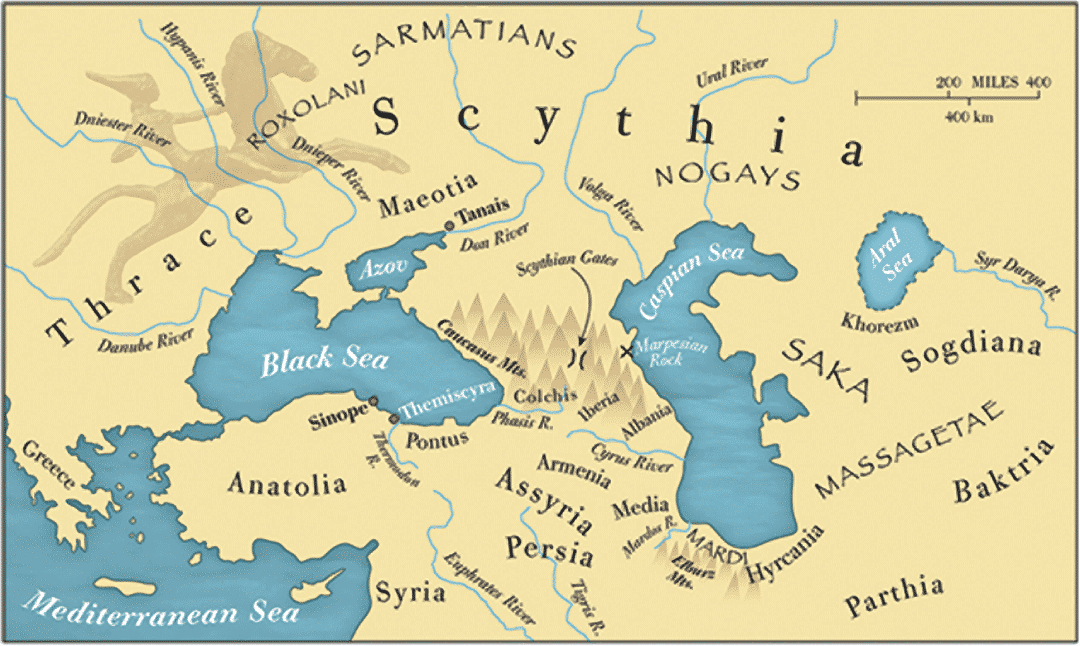Bible Question:
Which countries are ancient Gog and Magog?
Bible Answer:
Which countries are ancient Gog and Magog? The answer is given in a variety of Old Testament passages. It is also confirmed by historians. So, lets discover the answer.

Gog Is the Leader of Magog
Ezekiel 38-39 describes the battle that is commonly called the battle of Gog and Magog. This battle will occur at the end of the great tribulation and during the battle of Armageddon. But who are Gog and Magog? Ezekiel 38:2 and Ezekiel 39:1 reveal that Gog is the leader of a nation referred to as Magog. In Ezekiel 38:2-3, we are told that Gog is “of the land of Magog.”
Son of man, set your face toward Gog of the land of Magog, the prince of Rosh, Meshech and Tubal, and prophesy against him and say, ‘Thus says the Lord GOD, “Behold, I am against you, O Gog, prince of Rosh, Meshech and Tubal.” Ezekiel 38:2-3 (NASB)
That is, Gog is the leader of the land of Magog. We are also told that Gog is the “prince of Rosh, Meshech and Tubal. Once again we are told that Gog is a person. In Ezekiel 39:1-2, we discover again that Gog is a prince or a leader.
And you, son of man, prophesy against Gog and say, ‘Thus says the Lord GOD, “Behold, I am against you, O Gog, prince of Rosh, Meshech and Tubal; and I will turn you around, drive you on, take you up from the remotest parts of the north and bring you against the mountains of Israel. Ezekiel 39:1-2 (NASB)
Then God declares that He will drive Gog into the mountains of Israel. So, Gog is the leader of the land of Magog. When Gog moves against Israel, God will destroy him and his army (Daniel 11:44-45)
Magog Includes Russia and Other Nations
So, which nation or nations today occupy the ancient lands of Magog? Genesis 10:2 tells us that Magog was a son of Japheth.
The sons of Japheth were Gomer and Magog and Madai and Javan and Tubal and Meshech and Tiras. Genesis 10:2 (NASB)
The descendants of Magog were scattered away from the Tower of Babel in Genesis 11. So, where did they go? Ancient historical records reveal the descendants of Magog scattered into various regions of the world. Flavius Josephus reports the Scythians were descendants of Magog.[1] The Scythians had a reputation for being anti-religion.[2] That agrees with Russia’s reputation today. In addition, the church father Jerome writes,
“Scythian nations, fierce and innumerable, who live beyond the Caucasus and the lake Maeotis, and near the Caspian Sea, and spread out even onward to India.”[3]
Some historians indicate the descendants of Magog include the Goths. [4] Bill Copper provides evidence that the descendants of Magog also include the Russians, Ukrainians, Hungarians, Finns, Siberians, Yugoslavians, Croatians, Bosnians, Serbians, Slovenians, Slovakians, Bulgarians, Poles, Czechs. [5] Bodie Hodge reports that the descendants of Magog also arrived in Sweden, Finland, Germany, Ireland and Scotland. [6] Additionally, the descendants of Magog intermarried with the people in Turkey. [7] After intermarrying with people in Russia, they may have moved into Siberia and then North America. [8] Some conjecture the Magogites intermingled with people in China. [9] The picture is that the descendants of Magog spread to modern day Turkey, and ancient Scythia. They also migrated northwest into Europe, north into Russia, and eastward across Asia.
This historical information fits biblical prophecy which indicates that the king of the north in Daniel 11:36-45 will invade Israel at the end of the great tribulation. The ancient king of the north occupied the territory known as the Seleucid Empire. It was part of Alexander the Great’s territory that extended into India and pushed up into the territory surrounding the Caspian Sea. All of the descendants from that territory traveled into the nations mentioned above. In summary, Russia and the Arab nations will be the primary invaders at the battle of Armageddon.
References:
1. Flavius Jospehus. Book 1, Chapter VI, Section 1. Josephus. Kregel Publications. 1960. p. 31.
2. McClintock and Strong. Cyclopedia of Biblical, Theological, and Ecclesiastical Literature. 1881. vol. V. p. 653.
3. McClintock and Strong. Cyclopedia of Biblical, Theological, and Ecclesiastical Literature. 1881. vol. V. p. 653.
4. Bill Copper. After the Flood. New Wine Press. 1995. p. 48-52, 200-201.
5. William E. Wenstrom, Jr. The Table of Nations. Bible Ministries. 2014. p 2.
6. Bodie Hodge, Tower of Babel (Green Forest Arkansas: Master Books, 2014), p. 162-163.
7. Ibid., p. 164.
8. Ibid.
9. Ibid.